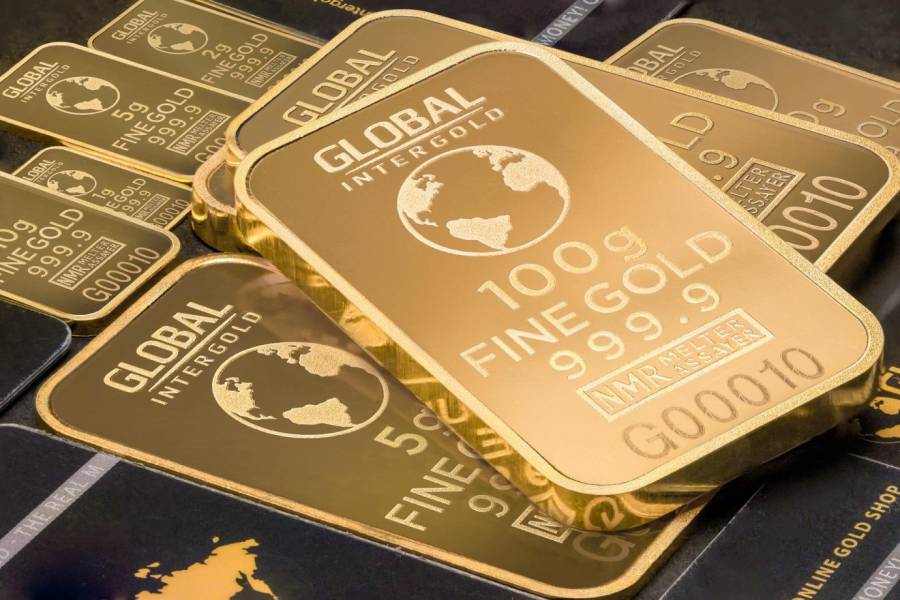The latest stories from economic and investment news suggest that the interest curve in precious metals keeps rising, as they remain relatively stable for investors. We decided to look more closely at what shapes this continuous human interest in gold as an investment opportunity, beyond investing itself.
To make this clearer, we need to understand that the interest in investing in certain assets does not always come from academic textbooks and papers written about economics. We have so many areas of external influence, and we carry those into the decision-making process. Let’s start with pop culture.

Pop Culture Shapes Our View of Precious Metals
In popular culture, gold and other precious metals are synonymous with wealth and luxury. Think of pirates hunting chests of gold in adventure stories or video games where collecting gold coins means you’re winning.
The gaming industry, especially online casinos, leans into this imagery especially when it comes to some of the most dynamic games like slots and its variations. If you check out the options of progressive slots at Bovada, they carry names that feature precious metal names; For instance, Diamond Dozen, Gold Rush Gus and other names come to prove the idea that in pop culture, precious metals are still associated with rich experiences, and create the real perception of money flow.
This cultural backdrop means that many people grow up equating precious metals with prosperity, and it is reflected in pop culture which influences many other areas of human activity, including investments. So when it comes to investing, the idea of owning gold feels like owning a piece of that shiny wealth we’ve seen in movies and games.
But unlike in a video game, you can’t just “pick up” gold in real life without dealing with vaults, coins, or heavy bars. That’s where the innovation of Gold ETFs enters the scene, bridging the gap between gold’s pop culture mystique and modern investing convenience.
Gold ETFs Go Mainstream in the U.S.
Over the past two decades, gold ETFs have grown enormously. GLD itself has swelled to about $74 billion in assets, accounting for roughly 60% of the U.S. gold ETF market. In fact, GLD holds so much bullion that if it were a country, it would rank among the top gold owners in the world. And GLD is just the largest example – there are now numerous gold ETFs and similar products, collectively accounting for a significant part of the gold market. Both institutional investors and individuals use these funds to implement gold in their strategies, from hedge funds making quick trades to everyday people adding a dash of gold as a long-term safe haven.
In early 2025 the price of gold hit a record high around $3,000 per ounce amid global trade worries, as investors sought stability in the metal. This rush into gold was clearly reflected in ETF flows – gold ETFs saw an influx of about 226.5 metric tons ($21.1 billion) in the first quarter of 2025, the largest quarterly inflow in three years. Those purchases lifted global gold ETF holdings to roughly 3,445 tons by March 2025, the most since 2023 and not far from the all-time high set in 2020 when pandemic fears drove a massive gold rally.
In short, gold ETFs have gone from a novel idea to a mainstream asset class in the U.S. They’ve made owning gold as easy as buying any stock, which means the fascination with gold is no longer just theoretical. When the headlines get scary or inflation heats up, Americans aren’t hoarding coins under the mattress but buying gold ETF shares on their phones.
The Appeal of Passive Investing in Gold (and Beyond)
It’s no coincidence that the rise of gold ETFs parallels the broader boom in passive investing. In the last decade, investors have increasingly favored low-cost, hands-off investment vehicles – and gold ETFs fit right into that trend. Investors have shown a clear preference for passive ETFs in general, pouring record amounts into these funds, because they offer simplicity and instant diversification. Just as index funds made it effortless to own the stock market, gold ETFs make it effortless to own physical gold.
It’s this combination of cultural allure and practical investing benefits that has fueled the rise of passive gold investing. Those who stay updated on pop news on social media or just are curious about human perceptions, know very well that culturally, gold represents wealth and security – an image constantly reinforced by games, media, and history. Financially, gold ETFs have turned that image into an accessible reality, giving investors an easy way to put some “golden” stability into their portfolios. The U.S. market has especially embraced this trend, making gold ETFs a staple in many retirement and investment accounts.

Peyman Khosravani is a global blockchain and digital transformation expert with a passion for marketing, futuristic ideas, analytics insights, startup businesses, and effective communications. He has extensive experience in blockchain and DeFi projects and is committed to using technology to bring justice and fairness to society and promote freedom. Peyman has worked with international organizations to improve digital transformation strategies and data-gathering strategies that help identify customer touchpoints and sources of data that tell the story of what is happening. With his expertise in blockchain, digital transformation, marketing, analytics insights, startup businesses, and effective communications, Peyman is dedicated to helping businesses succeed in the digital age. He believes that technology can be used as a tool for positive change in the world.








